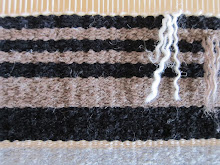
Lily and Blossom from Turkey Hill Farm
As the temperatures creep up, the snow melts, and the sap starts to flow, you notice trees decked out with sugar buckets here in Vermont. We had a wonderful, very social weekend that included an introduction to sugaring. We started out yesterday morning with friends from Randolph and visited Turkey Hill Farm in Randolph Center. Besides watching their sugar making operation, and getting wonderful explanations about the whole process, we also bought fresh milk from their cows, Lily and Blossom. Since moving to Vermont I have been able to buy raw milk and make delicious yogurt, something I hadn't done since the '60s. It is very easy to do, and I will put my recipe at the end of this post.

Michael Sacca boiling maple sap
Late in the afternoon we ventured out on muddy roads to visit our friends, Liz Billings and Michael Sacca, and their children (our god children), Issac, Susanna and Mario. I think I have mentioned this in the past, that living near them was key to our move to Vermont. They have tapped trees on their property and you can see Michael, above, boiling the sap down into syrup. It is quite an operation, and takes 40 gallons of sap to make 1 gallon of maple syrup.
Then we were introduced to a tradition that we can easily incorporate into our own lives--making fresh donuts and eating them, dunked into bowls of maple syrup, hot from the frying pan. You can see Mario, below, making the donuts and then he, Issac, Susanna, and Mark relishing them. It was definitely desert before main course last night--or maybe desert as main course. I think once a year is enough for this tradition. Otherwise it would totally undue all the good I am gaining by going to the gym.

Mario Sacca making Donuts

Donut Eaters: Mario, Issac, Susanna, and Mark
So I need to label this next part, Two Heads are Better than One! After posting the last entry, with the two weft-backed weave structures, I got a lovely email from Alice Schlein, my co-author of The Woven Pixel, pointing out that I had "put the ties of the back wefts immediately opposite the ties of the front weft...," which puzzled her since I am always saying something like "hide the tacking points behind floats of weft or warp." She thought I had a reason for doing this, but I had just forgotten to slide the tacking points over. So I am posting a corrected version of one of the structures here for you to see. I actually spent today weaving a 208 pick section of my weaving, Intertwined, four times, each time varying the structures--so I could count actual picks per inch, and see how the wefts packed down, etc. When I take it off the loom in a day or two, I will show you some details. I don't know why people think art and science is so different. I think they both are explorations of the unknown. By questioning and quantifying this information, I should be able to design future weavings with more ease.

4WB1,11satin2toTopOffset
Here is how I am making yogurt these days. I take half a gallon of raw milk and heat it in a pot to 180 degrees Fahrenheit. Then I let it cool to 108 degrees and add 1/4 to 1/3 of a cup of yogurt from a previous batch, and whisk it up. Then I pour the liquid into two quarter gallon glass mason jars with wide lids. While the milk is heating and cooling, I boil water and fill a half-gallon mason jar with it and place it into a thermal zippered bag (I have one that I got at Trader Joe's). Then I put the two jars of yogurt in the bag, on either side of the hot water bottle, and leave it for the day, or overnight. So far I have made perfect yogurt, and I definitely prefer this method to my old one of wrapping jars in a sleeping bag and putting it out in the sun.


































